In the 1980 El Caballero, Las Lomas devoted a section of the yearbook to memorializing the closure of Del Valle. They talk about how the closure affected a lot of students and faculty who ended up at Las Lomas. We’ve included the relevant sections below. At the end, there is also an excerpt from The Road To Excellence: A History Of The Acalanes Union High School District by Margaret Mahler as well as an excerpt from a May 30th, 1980 article in The Sun by Brad Rovanpera on the 40th anniversary of Acalanes.
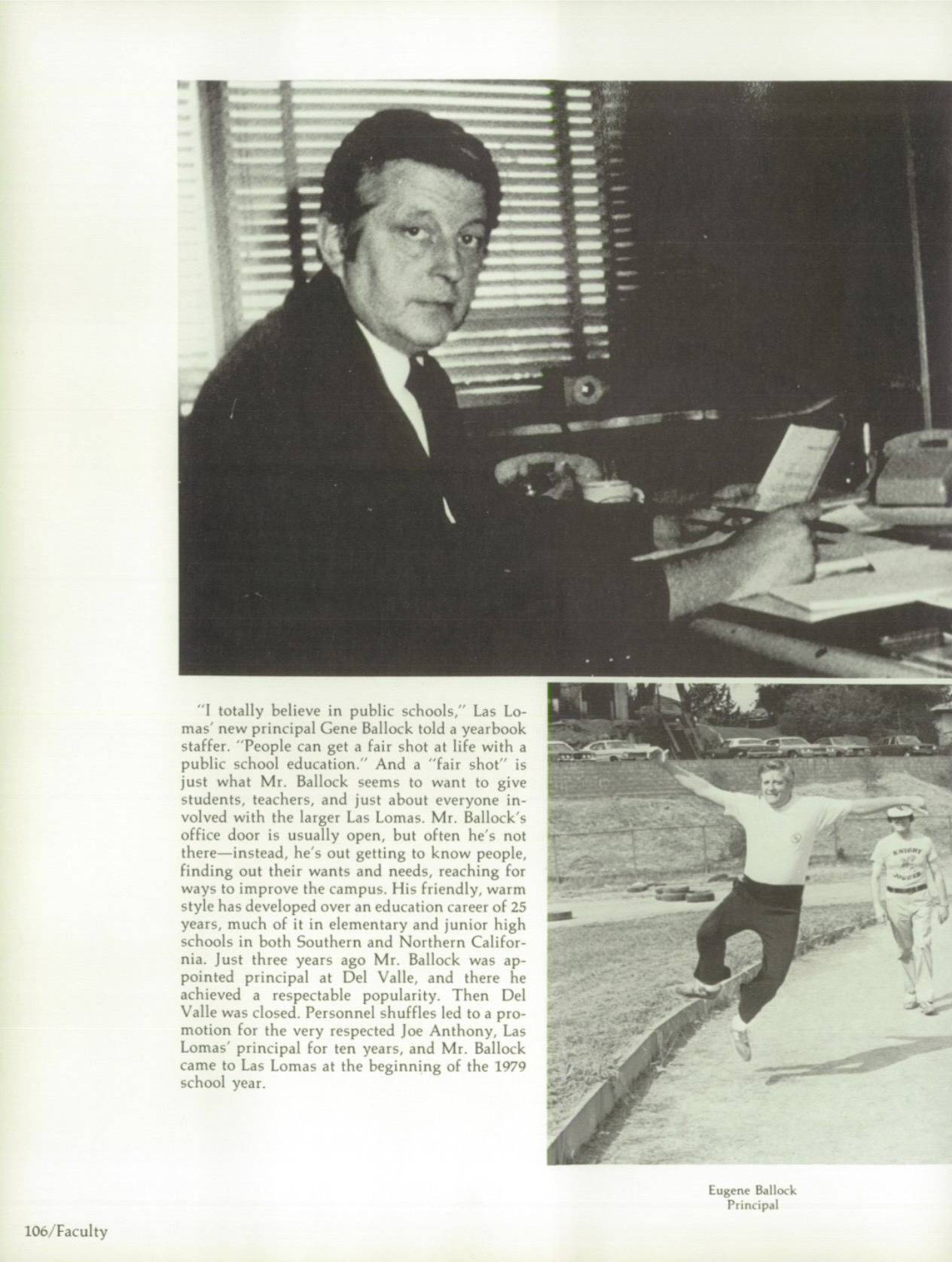
“I totally believe in public schools,” Las Lomas’ new principal Gene Ballock told a yearbook staffer. “People can get a fair shot at life with a public school education.” And a “fair shot” is just what Mr. Ballock seems to want to give students, teachers, and just about everyone involved with the larger Las Lomas. Mr. Ballock’s office door is usually open, but often he’s not there–instead, he’s out getting to know people, finding out their wants and needs, reaching for ways to improve the campus. His friendly, warm style has developed over an education career of 25 years, much of it in elementary and junior high schools in both Southern and Northern California. Just three years ago Mr. Ballock was appointed principal at Del Valle, and there he achieved a respectable popularity. Then Del Valle was closed. Personnel shuffles led to a promotion for the very respected Joe Anthony, Las Lomas’ principal for ten years, and Mr. Ballock came to Las Lomas at the beginning of the 1979 school year.
Declining enrollment, a problem in schools throughout California, has hit the Acalanes Union High School District particularly hard in recent years, enough to cause the closing of one of the five high schools. But which one? A committee called FACT spent many hours studying all the facts (no pun intended) and recommended that Del Valle be the victim. That disappointed most of the Del Valle community, but people from Las Lomas, the next contender, breathed a sigh of relief. All this happened during the 1978-79 school year, and the changes after that were too many to count.
Most of the faculty and staff changes in 1979 involved the coming of people from Del Valle–Principal Eugene Ballock, Glenn Amsberry, Robert Ehrlich, Walter Elliot, Anita Farnholtz, Kathleen Glaser, Jim Hand, Phil Huff, Harry Innocenti, Curt King, Jane Luhks, Elizabeth Robinson, Marie Spinadel, Virginia Whitacre, Bog Wignot, June Anderson, Susan Bryant, Shirley Sweeney, Marian Luttrell, and Corrine Morbidelli. They joined the Las Lomas originals and soon the students couldn’t tell who started where. And it was just as well.
Each new school year brings new faces, not all of them students. And this year is no exception. Most of the new teachers came from Del Valle, but some people were transferred from other schools in the district. Take German teacher Karin Cohn for an example; she came from Acalanes High School in Lafayette. And Betty Gerber, a long-term substitute who has taught at two other schools in the district, re-joined the Las Lomas faculty as an English and Social Studies teacher. Diane Inman, a former full-time Campolindo High School teacher taught in the Las Lomas English Department last year and didn’t expect to return for the 1979-80 school year. Then she did return, this time as a combination English, Social Studies teacher.
Changes in curriculum came fast and furious as Las Lomas and Del Valle joined forces, and one of the most significant changes involved the moving of the Special Education class to the downtown Walnut Creek campus. Taught by Mrs. Marie Spinadel and her assistant, Mrs. Shirley Sweeney. The class stresses the bringing of handicapped students into the regular school. Students take advantage of a specially outfitted room–509–to learn about the practical side of life. The group also takes several kinds of vocational field trips. Other curriculum changes this year involved the addition of several classes, including orchestra, English as a second language, calculus and computer programming. As the size of the student body increases, so does the curriculum.
Brand new teachers are a rarity these days, what with the shortage of teaching jobs, but it turns out that Las Lomas has two who have not previously taught in the Acalanes Union High School District. Art McNulty, a specialist in the teaching of students with learning disabilities, works half-time at Las Lomas and half-time at Campolindo High School in Moraga. Mr. McNulty, holder of a Masters of Arts Degree in Special Education from California State University, Los Angeles, has worked in the field for the past 15 years, all of them in the Southern California area. He told a yearbook staffer it was a pleasure to be in Northern California. A second newcomer, Larry Osborne, has taken over the instrumental music duties at Las Lomas after teaching in Union City and Hayward. Besides teaching at Las Lomas, Mr. Osborne plays the French horn in orchestras that play at professional stage productions in San Francisco.
Teachers are people too, human beings with lots of other things going on besides teaching. Like Nancy Cossitt is writing a novel and Nancy Harter serves on the ski patrol. Stanley Reinhardt is an ordained minister, and Dick Ogata works each year on a Japanese cultural event in Concord. Bob Ehrlich raises show dogs and Bob Morris attends law school. Three teachers drive utterly fantastic cars: Tom Costello, a ’75 Corvette; Gordon Lindsay, a ’79 Datsun 280 ZX; and Ed Silva, an ’80 Mazda RX-7. Topping them all are Ed Lahey, Ann Graybehl and Adrian Smith who all fly Airplanes. Jim Schwartz drives a motorcycle to school and Curt King rides his moped. We couldn’t find out if any teachers walk, but we heard Phil Huff takes the bus. Several teachers jog in their spare time, including Paul Simon who does about 30 miles a week. Bob McKechnie swims half-a-mile each day. Elizabeth Robinson hardly has any time to do that extra stuff because she’s always making her 80 commute miles from Mill Valley–back and forth. Yes, teachers are people too.
At the beginning of the school year Las Lomas grew by almost 300 students, thanks mostly to the closing of neighboring Del Valle. Now it might seem simple just to close a high school, but lots of unforeseen problems came up. Some teachers had worked together for many years, for example; they were split apart by the staffing needs of other schools. What’s more, deciding what to do with all the books and equipment took months of talking and negotiating, much of which was not finished when the yearbook went to press. Yes, problems existed, but people did work together and come up with solutions, and the school year progressed as scheduled.
Las Lomas, a fairly new school by many standards, still has two of its original teachers, and both today serve in the Counseling Office. Ruth Malnik and John Wells were members of the faculty when the school opened in 1951. Ed Lahey taught at Acalanes High School at that time and transfered to Las Lomas after it got going. Lahey and Nancy Harter are both Acalanes graduates, and Bob Morris is a Las Lomas alumni, class of 1960. Several teachers have taught in foreign countries: Gordon Lindsay with two years in Pakistan; Harry Innocenti, two years in Australia; and Betty Johnson, one year in France.
Excerpt From The Road To Excellence: A History of the Acalanes Union High School District by Margaret Mahler
The Perils of Proposition 13 After Proposition 13, by the summer of 1978, Mr. Corbin had instituted a Revenue, Resource, Research Committee (RC3) to explore possibilities of donations from the community to revive the sports program which had virtually been eliminated since funds were not available.
School buses, long an expected service of the District, were reduced to transporting special students only. From the Board Minutes of July 19, 1978: “Now, therefore, be it resolved that the Acalanes High School District reduce transportation services, retaining only those services needed to transport Special Education students.”
Board members facing these traumatic times were Don Galloway, President: Dorothy D’Ambrogia, Clerk; Ian B. Johnston, Donald E. Manuel, Lloyd J. Torchio, and Mary Egan, student member. Another committee, Faculty Advisory Community Team (FACT), was set up to discuss the issue of school closure. Enrollment had dropped to 6,585 by September of 1978, and FACT reported the District could be housed in four schools.
As always, parents in the District were doing everything in their power to help. They always have. Alex Winchester remembers a time when he received a call from a bank in Walnut Creek asking him to come in to discuss a school matter. When he arrived, he was told that an anonymous parent wished to donate an indoor-outdoor track to Campolindo! All Mr. Winchester had to do was come up with a figure–and after much research he did–about $70,000! Campolindo received the money and built their track!
So during these trying times, parents were working very hard for the schools. In September of 1978, $4,088 was contributed by parents for a mass “paint in” at Acalanes High School. The parents contributed both the paint and the elbow grease.
The R3C Committee, with spokesman Dr. Bruce Bachman, continued to work for funds to restore items that were cut. The Committee worked with such groups as parents’ club, and the American Association of University Women to set up volunteer areas.
The FACT Committee, concerned with the possibility of school closure, had worked during the summer to come up with criteria upon which to evaluate a school.
At the board meeting on February 28, 1979, the Committee recommended the closure of Del Valle High School in the fall of 1979.
The least considered criteria were costs and values; highest concerns were for the students, the demographics and the quality of education. At the meeting the Board members tried to field questions from a very concerned public. So many were present, the meeting was held in the Acalanes High School library. The following are answers to some questions asked:
The estimated cost to maintain a school in closed condition is $150,000. The net saving next year toward reducing the budget deficit is estimated at $400,000. The board will consider the economics of school closure. Appraisals are being made on all sites. The board is not contemplating selling a site. The Bear Creek site was appraised a few years ago at $127,000. This would not bail the District out of its problems.
In answer to “Why close in 1979?”, Board members replied that the District should not gamble with its education on “ifs” and “ands” and “mights”; it must do what is best now. If there are changes, those who want unification will have to make them. The budget is at least $400,000 short; the District cannot go in the red. And additional 24 teachers would have to go, making a total of 44.
Dr. Johnston, longest acting member of the Board gave a different perspective. “The real problem is in Sacramento. It is a matter of the State deciding how it intends to finance the education of its children. Until there is an alternative method enacted, the entire school system is in tremendous chaos.”
His statement reinforced something the AEA had stated in January. “Teachers are being asked to cannibalize to feed themselves. The staff has been on a salary freeze this year. Local legislators should be urged for assistance.”
There were two more highly charged and emotional meetings where the public stated their views. Then on March 14, Dorothy D’Ambrogia reread her statement on school closure.
“I see a no-win situation if a school is not closed…Since I will be attacked regardless of what I do, since I feel there are serious ifs unknown and legal questions with the issue of unification, I am able to base my decision on education offered our students next September, and hopefully in the yeas to come.” Regretfully she voted to close Del Valle.
Don Manuel read his statement and voted for the closure of Las Lomas. Lloyd Torchio voted in favor of closing Del Valle. Dr. Johnston stated, “The central location of Las Lomas to me is a predominant deciding factor, and I would vote to close Del Valle.”
Mr. Don Galloway voted to keep Del Valle open.
Johnston/Torchio moved and seconded a roll call vote that the Board accept the recommendation of the FACT Committee and close Del Valle High School at the end of this academic year in June 1979.
ROLL CALL VOTE:
Ayes — Dorothy D’Ambrogia, Lloyd Torchio, Ian Johnston
Nayes — Donald E. Manuel and Don GallowayMOTION CARRIED.
The Board adjourned to Executive Session at 8:35 PM. The large groups of parents, faculty, and students were strangely quite. There were no cheers from Las Lomas advocates, but there were some sobs from Del Valle. A beautiful school would be closed. Years of tradition, loyalties, fine records and achievements were over. The Acalanes Union High School District had lost a fine school.
At following March and April meetings, Bill Ross resigned as Assistant Superintendent and asked to be reassigned as a teacher. The Board stated, “All five members of the Board really regret having to move on this reassignment. Mr. Ross has done a tremendous job over the years in the position of Assistant Superintendent of Personnel.
Joe Anthony was appointed to the position of Assistant Superintendent, and Gene Ballock, Principal of Del Valle, was transferred to Las Lomas. Members of the staff at Del Valle were reassigned and reemployed at the other high schools.
There was to be one more surprise in the school year. On July 10, Owen Corbin resigned and Bill Ross was asked to take over as Superintendent on an acting basis. Three months later his appointment was confirmed. It had been quite a year!
Excerpt From How Acalanes began: the birth of a ‘modern’ high school
In the last two years’ Acalanes has figured into the declining enrollment problem facing the district, and was temporarily considered for possible closure last year. However, with the resulting closure of Del Valle, the enrollment at Acalanes ballooned up to 1,600 students. The closure of the district’s flagship was never really imminent–it was acknowledged early that is was too centrally located and afforded easy access (a testament to the foresight of the district’s founders). Still, the mere rumor of its possible closure sparked a unification drive that ended unsuccessfully last year.
That’s all the information on this part that we have at the moment. As with all these posts, please feel free to share any information you might have.
For more on the Acalanes Radio Station KCEQ rabbit hole and other Lafayette History Rabbit Holes.
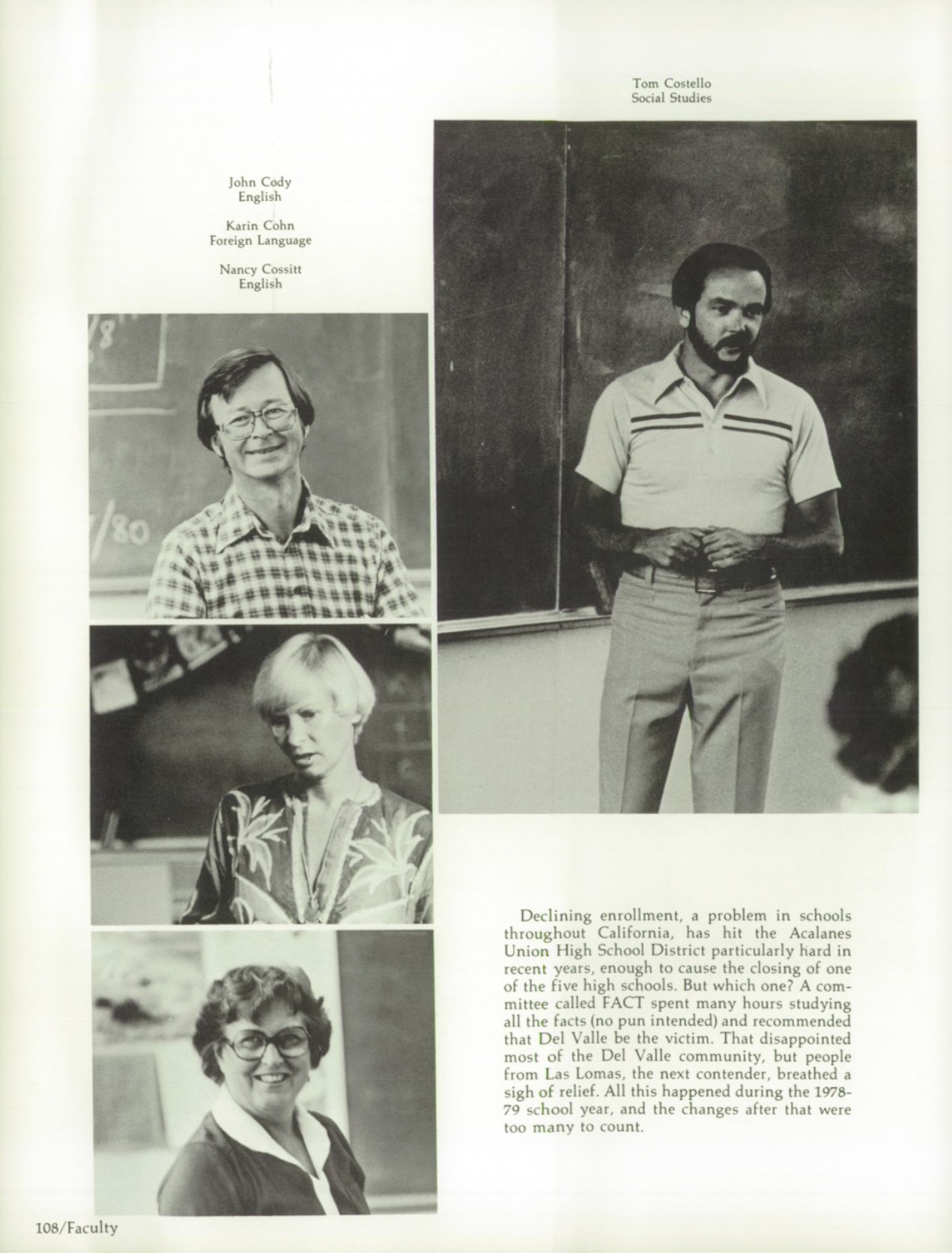

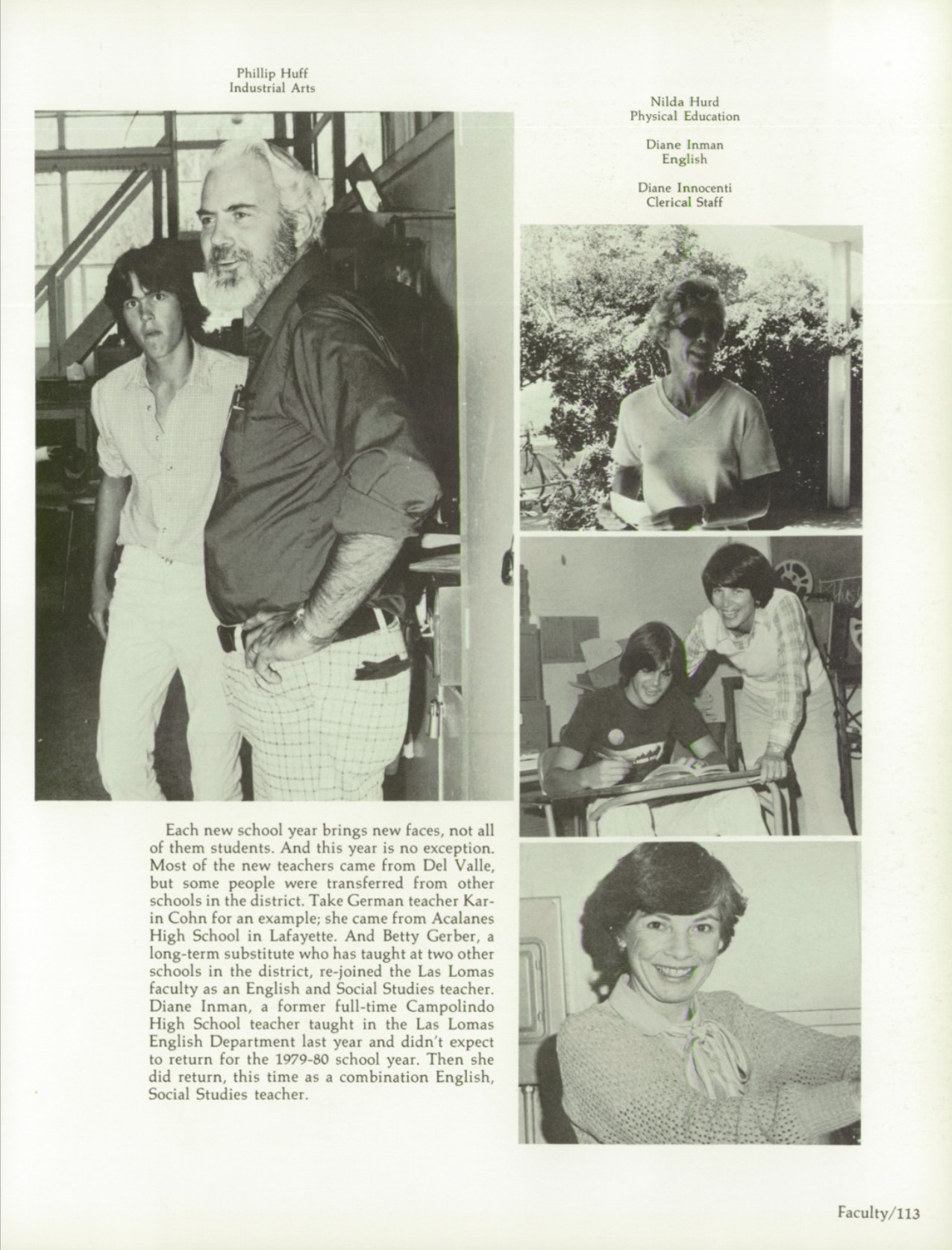
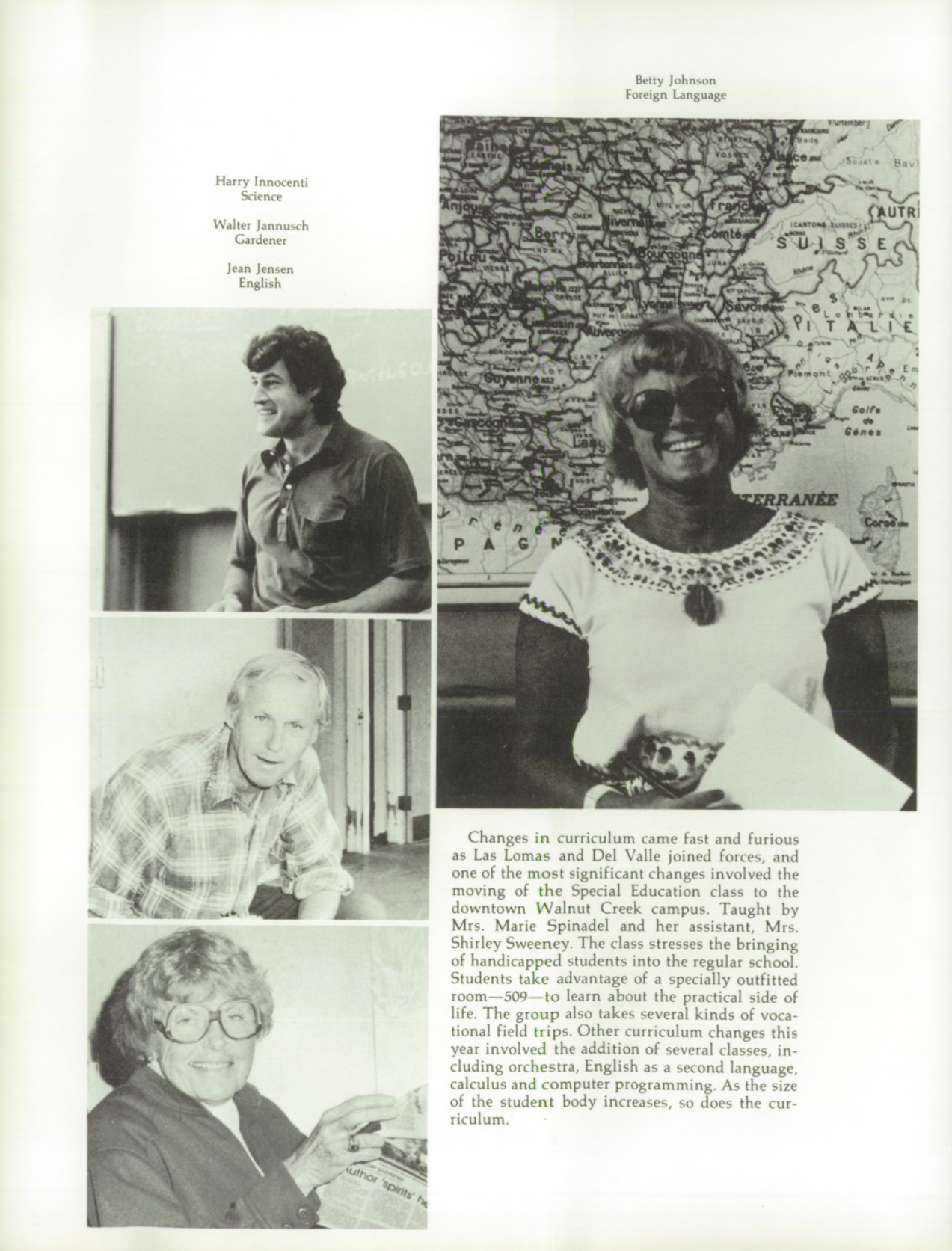

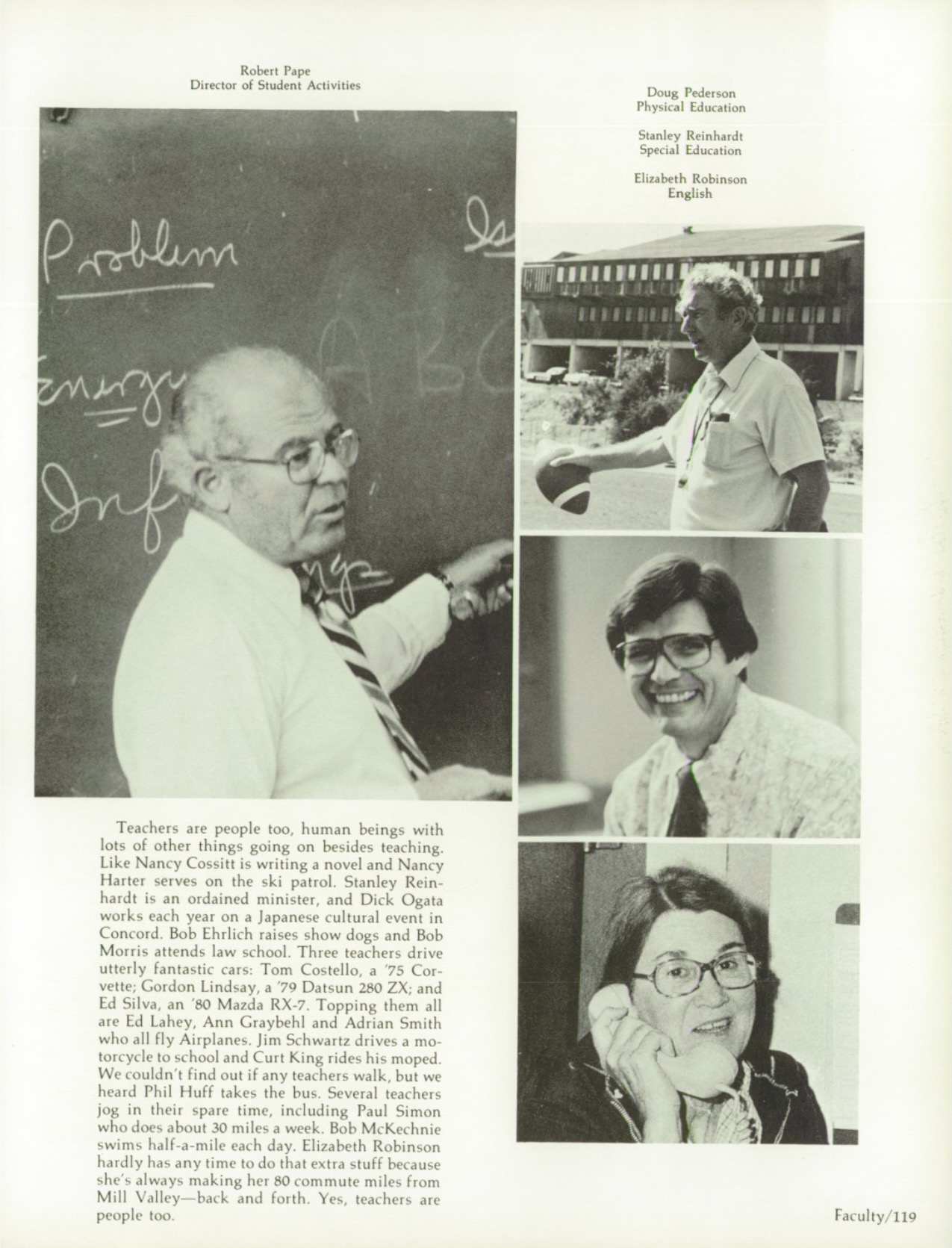
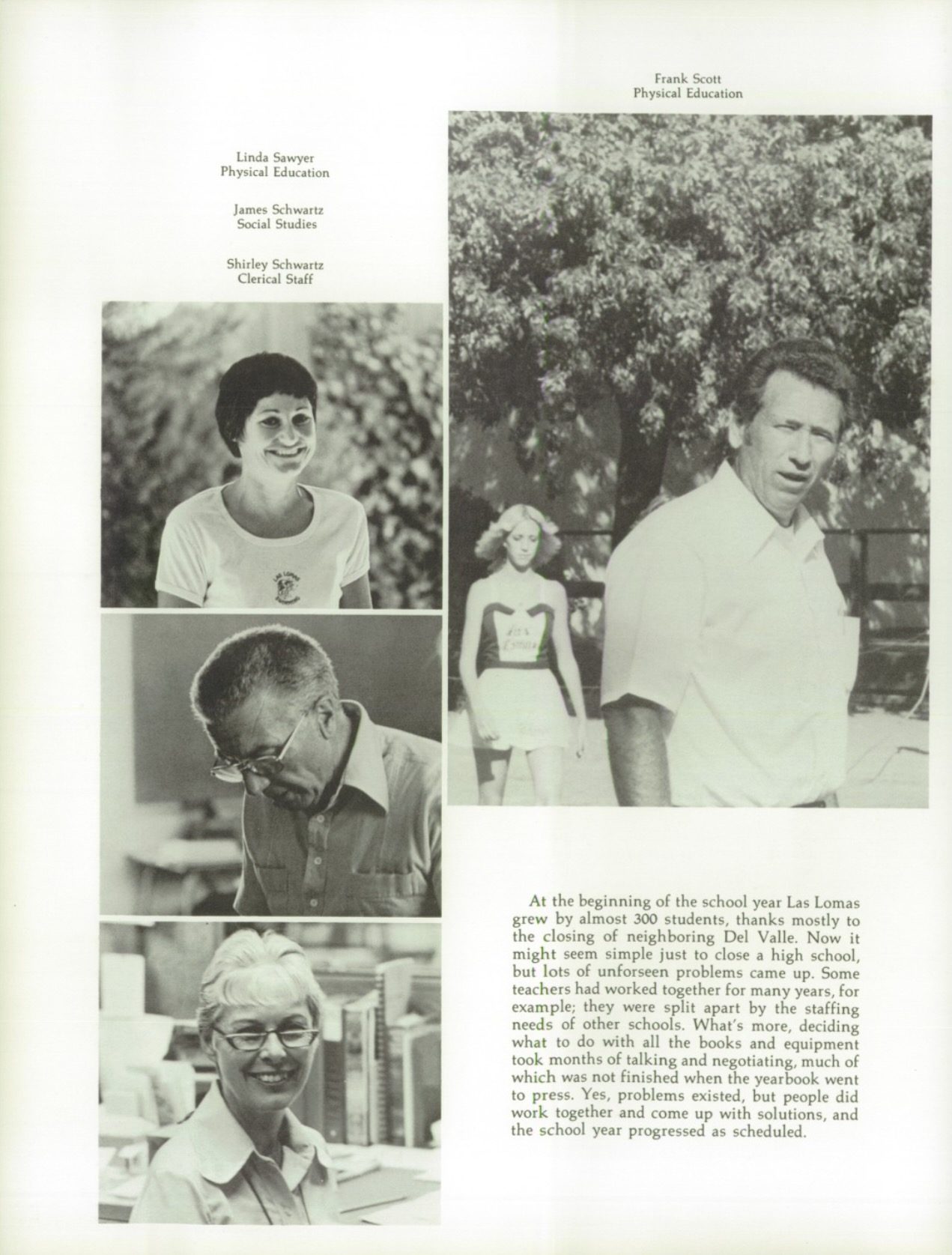
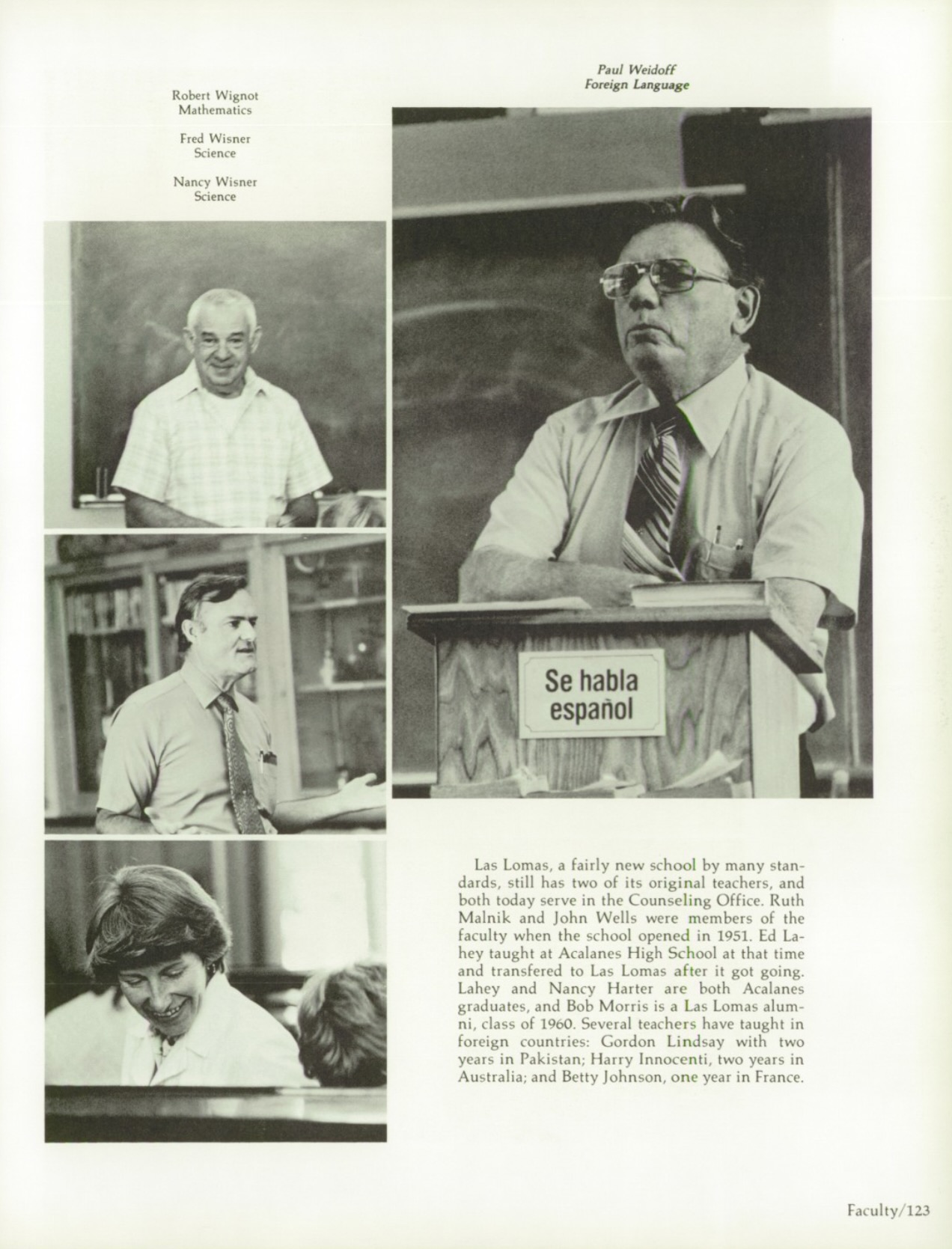
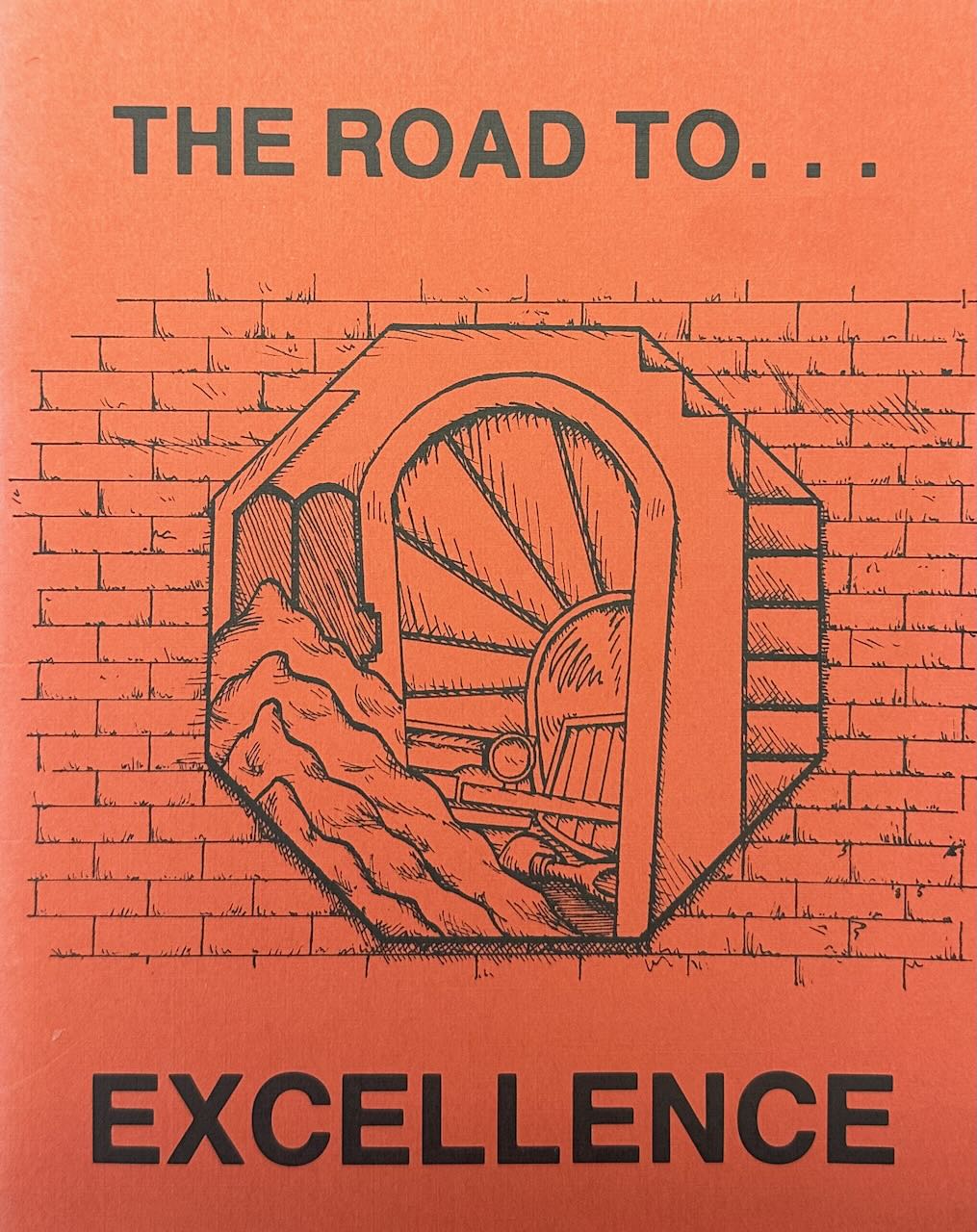

Leave a Reply